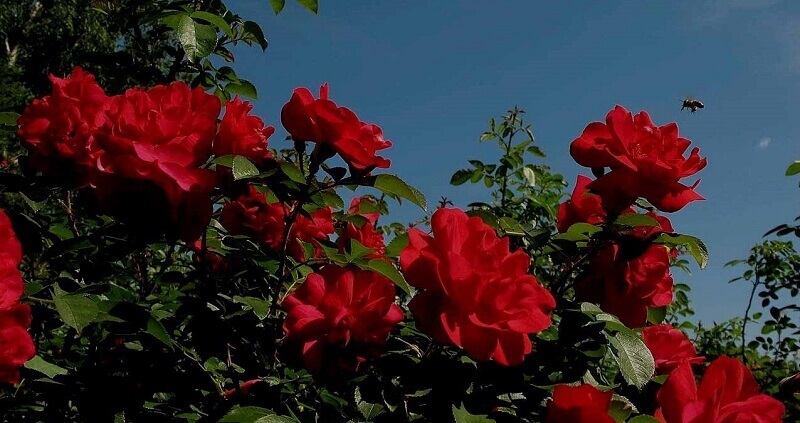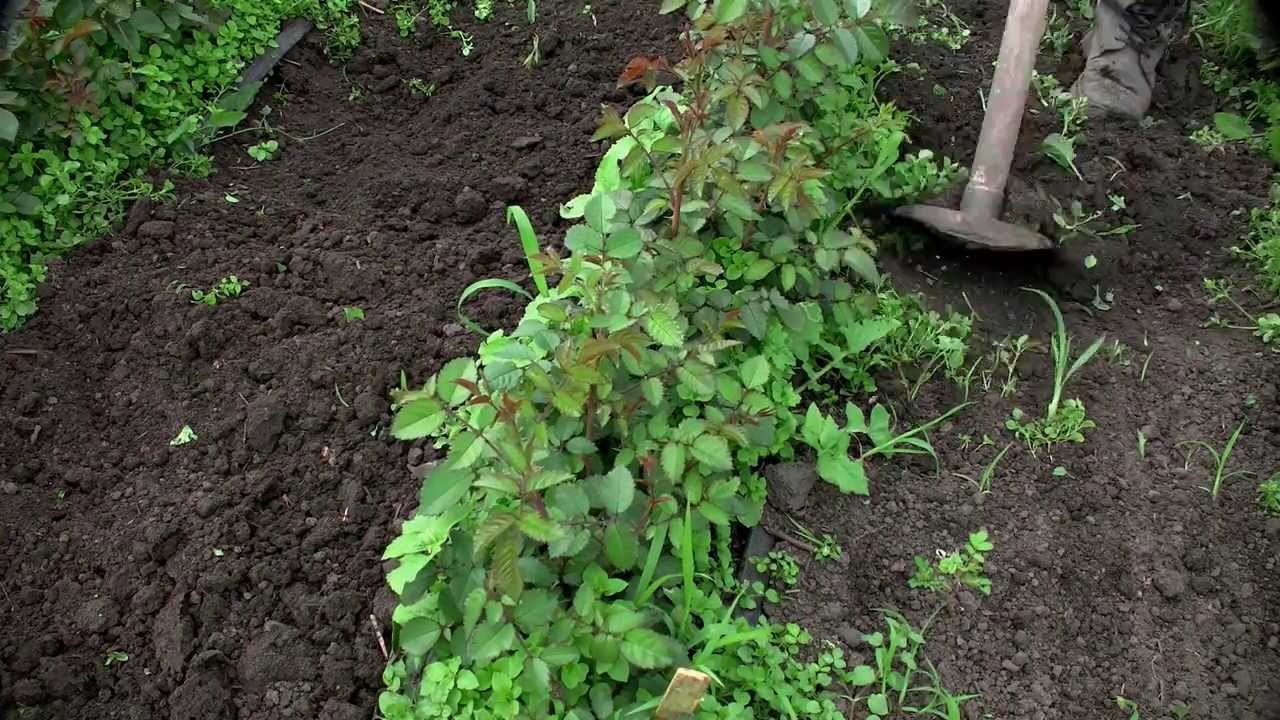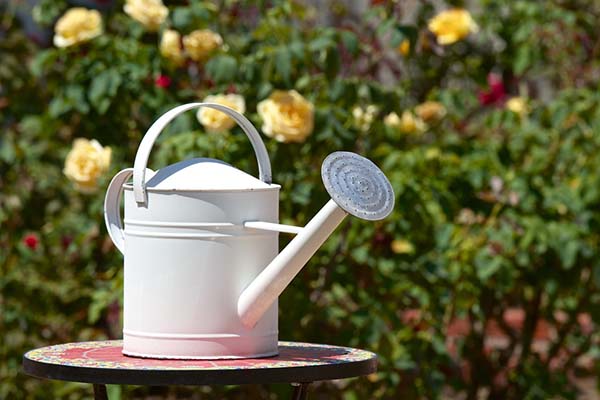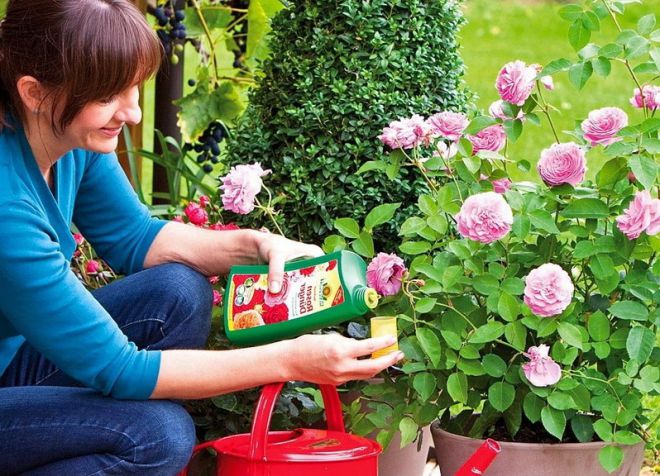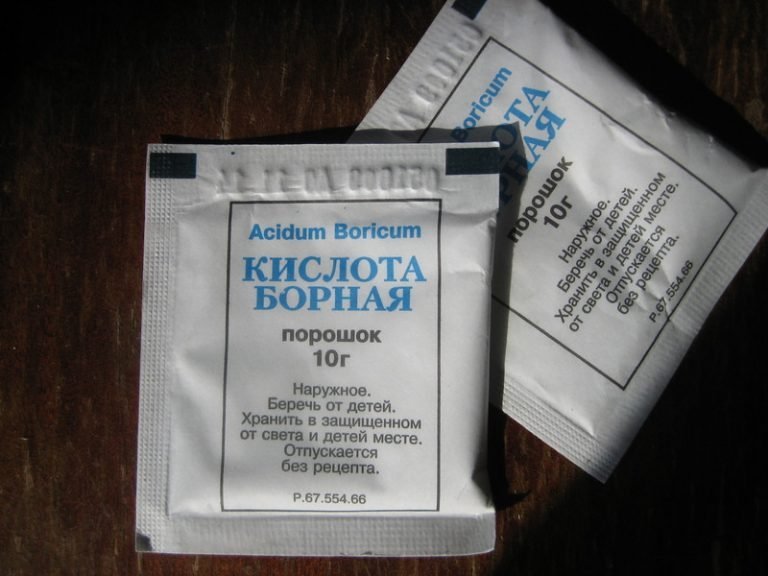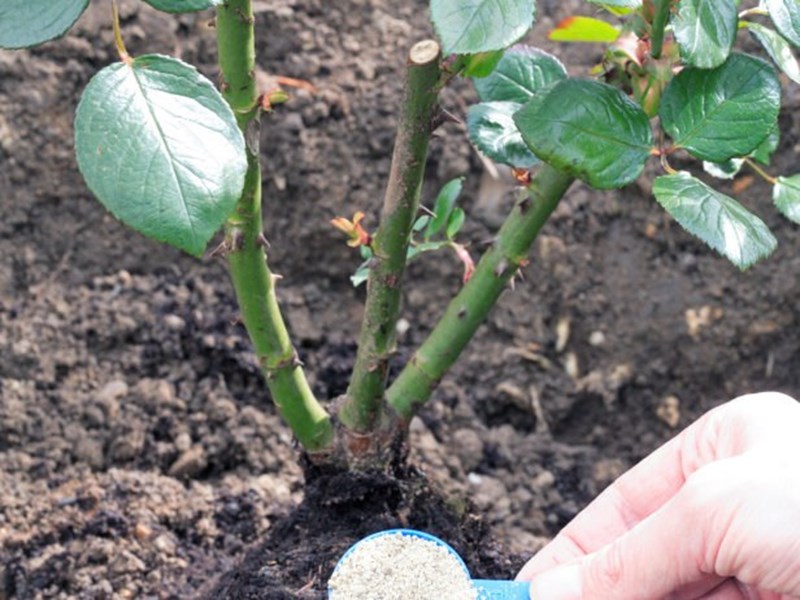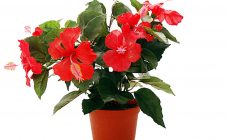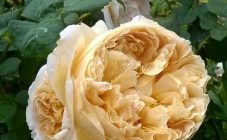Content:
The rose is the queen of flowers and is a very capricious plant. In order for roses to bloom luxuriantly in the garden or in the garden, they need to be surrounded with care and proper care. It is worth noting that even the slightest mistake in care can lead to the death of the plant. In order to properly water and not harm the flower, you need to familiarize yourself with the seasonal features of irrigation of this crop.
How to water roses in hot weather
Rose belongs to the group of capricious crops that can be harmed by both excess moisture and its lack. Many novice growers do not know how often a rose needs to be watered, but experienced experts say that the plant needs a one-time watering every 7 days. There is no exact irrigation regime, so you need to determine it yourself, while relying on the state of the topsoil and what changes are taking place with the plant. Young seedlings need more moisture than older and mature specimens, since moisture promotes their rapid rooting.
General rules for watering:
- Before planting a rose bush, it is necessary to form a roller of earth around it. This is necessary to collect moisture from the root system, while evaporation and spreading of water will not occur if the plant is not properly nourished.
- For irrigation, you need to take only water that was previously settled. Ordinary tap water is full of harmful elements that are dangerous to roses (for example, chlorine). If it is possible to use rainwater to water the plant, this will be the best option.
- It is strictly forbidden to use cold water for irrigation.
- One rose bush will need one bucket of water.
To ensure free access of oxygen to the root system, it is necessary to periodically loosen the soil after watering has been performed. This will prevent crust formation on the surface of the soil and it will be better for air permeability. You can moisten the soil near the roots, as well as the foliage, with the help of a small watering can - the procedure is called sprinkling. It is worth noting that it is strictly forbidden to water a rose from a hose, since this method of watering harms the plant: such surface watering does not bring any benefit, because cold tap water is used for it.
If the weather is hot outside, you do not need to spray and water the roses - a sunburn may occur on the petals and foliage due to the water droplets that remain on them after such a procedure. It is also not recommended to water the roses in the evening, because this entails very unpleasant diseases, which will then be extremely difficult to fight.
Rules for proper watering of roses in spring
In spring, the active growth phase of rose bushes begins: new shoots are formed and buds swell, for this the flowers will need a lot of strength.
You need to water roses in spring no more than once every 7 days. If young seedlings were planted in open ground recently, they need to be surrounded with special attention and watered every other day, over time, increasing the intervals between waterings - this can significantly accelerate the growth of the plant.
You should always pay attention to the state of the soil under the rose bushes at a given time. You can check the condition of the ground as follows: remove the top layer of mulch, then use a shovel to make a 10 cm depression. If the soil is wet, this indicates that there is no need to water the rose at the moment.
Basic rules for proper watering of roses in summer
If the weather is hot in summer, the frequency of watering should be greater than in spring, because the garden bed where the roses grow should in no case dry out. If the summer is cool, it is worth adhering to the usual watering regime, perhaps even a reduction. During a rainy summer, you should not neglect watering rose bushes in the garden - although rain can create the illusion that the soil is saturated with moisture, only its top layer is wetted. Rainwater rarely penetrates the root system of a crop.
It is necessary to monitor the state of the area where the roses grow, and also determine how many times the plant is sprayed in a given period of time.
Proper watering and feeding of rose bushes in autumn
In autumn, watering should be gradually reduced, and in the second half of September it should be stopped altogether. Thus, the active phase of the development of roses ends and a natural process starts - the bushes prepare for the onset of winter. If autumn is rainy, the rose garden should be additionally covered with foil and not opened to prevent the accumulation of excess moisture. Also, around the perimeter of the entire bed, you need to make a small groove so that water can flow there.
With the onset of autumn, it is recommended to revise the composition of fertilizers for rose bushes. Active vegetation involves the use of exclusively nitrogen fertilizers, which are necessary for the growth of foliage and stem. But the main purpose of the autumn feeding of rose plantations is to strengthen the root system. The following components are perfect for these purposes:
- magnesium;
- phosphorus;
- potassium.
Mineral complexes in the form of granules, which need to be scattered on the surface layer of loose soil, can also be used to fertilize roses.
What and how to feed and fertilize roses
Today there are many different recipes and means for feeding a plant, but experienced flower growers have identified several effective and efficient ones, namely feeding with yeast and boric acid. The yeast feeding method consists of several stages:
- The water must first be defended and then poured into a 3-liter jar (the water must be at room temperature). Do not fill the jar completely with liquid: you need to leave space so that during fermentation the product does not pour over the edges of the container.
- The next step is to take yeast (100 g), mix with a little water and add to the total volume of liquid.
- Add sugar (5 tablespoons), mix thoroughly, then place the container with the solution in a place where it is warm.
- After fermentation has ended, the substance can be used, otherwise its usefulness will be lost.
- The ready-made mixture (1 tbsp) should be added to 5 liters of water and poured around the trunk column.
Boric acid is also one of the best fertilizers. It is worth noting that if the rose lacks boron, then more and more underdeveloped buds will appear, in which the dense and short petals look like plasticine. Fertilizing roses with boric acid must be combined with the addition of wood ash (the best option would be the ash that was obtained after burning a birch tree).
It is worth considering that if boric acid is added in excessive amounts, plant toxicosis can be provoked. It is characterized by the fact that the edges of the leaves dry out, acquire a yellow tint and fall off early. In the intervals between the introduction of wood ash, rose bushes should be treated with boric acid, which contributes to the rapid formation of buds, and the quality of flowering is the best.
Boric acid must be prepared as follows: take 10 g of dry product and dilute in 10 liters of water. For good dissolution, the acid must be poured with hot water, then add cold water to the required volume. Boric acid feeding is carried out in the second half of April, and a repeated approach may be needed during the flowering of roses.
When growing a crop in your free time or on vacation, do not neglect useful information about how often to water roses and how to water roses from aphids (with a solution of Bordeaux liquid). After all, proper care can contribute to the fact that the bushes have as many inflorescences as possible, pleasing the eye with their incredible beauty.
